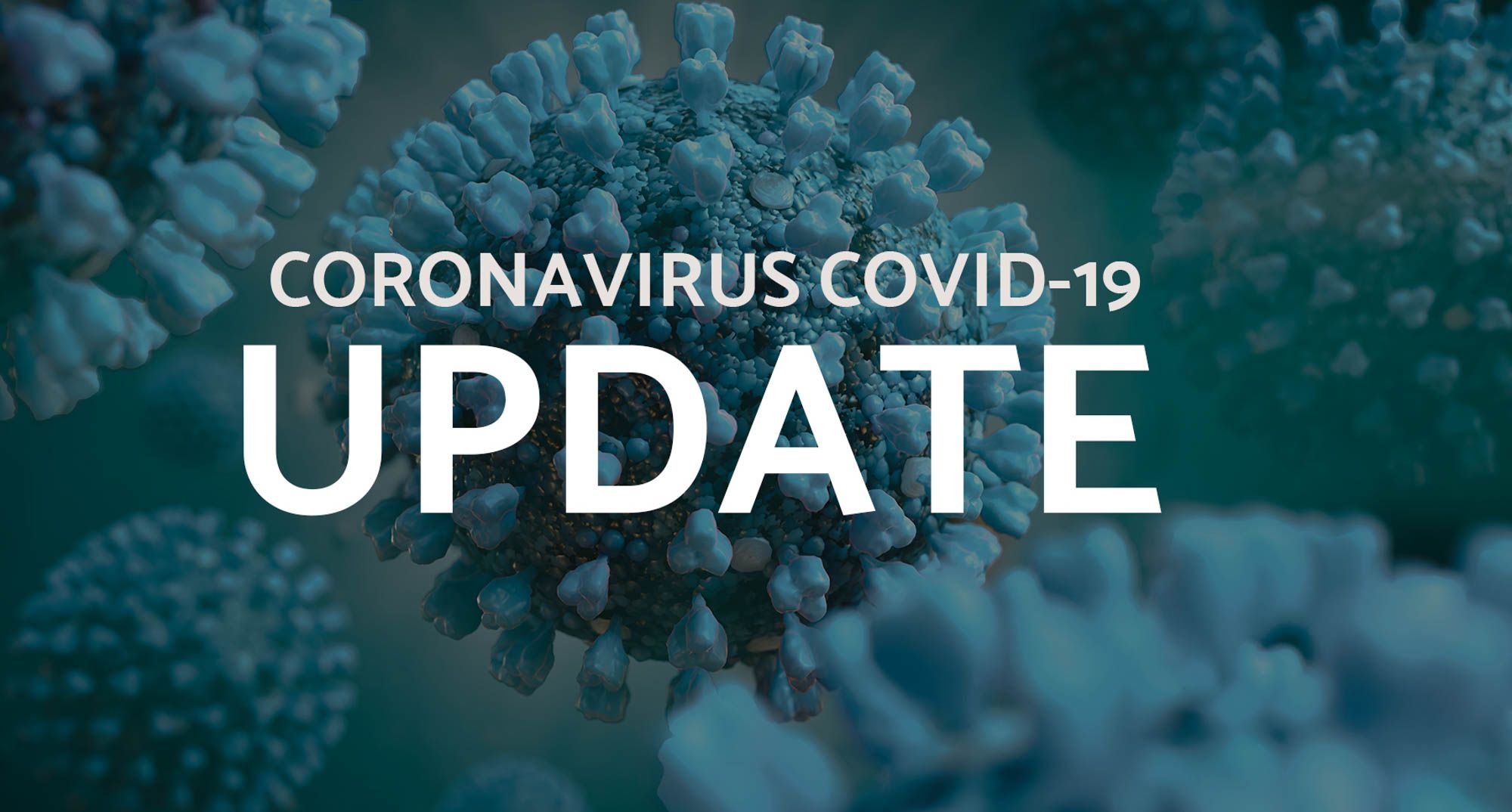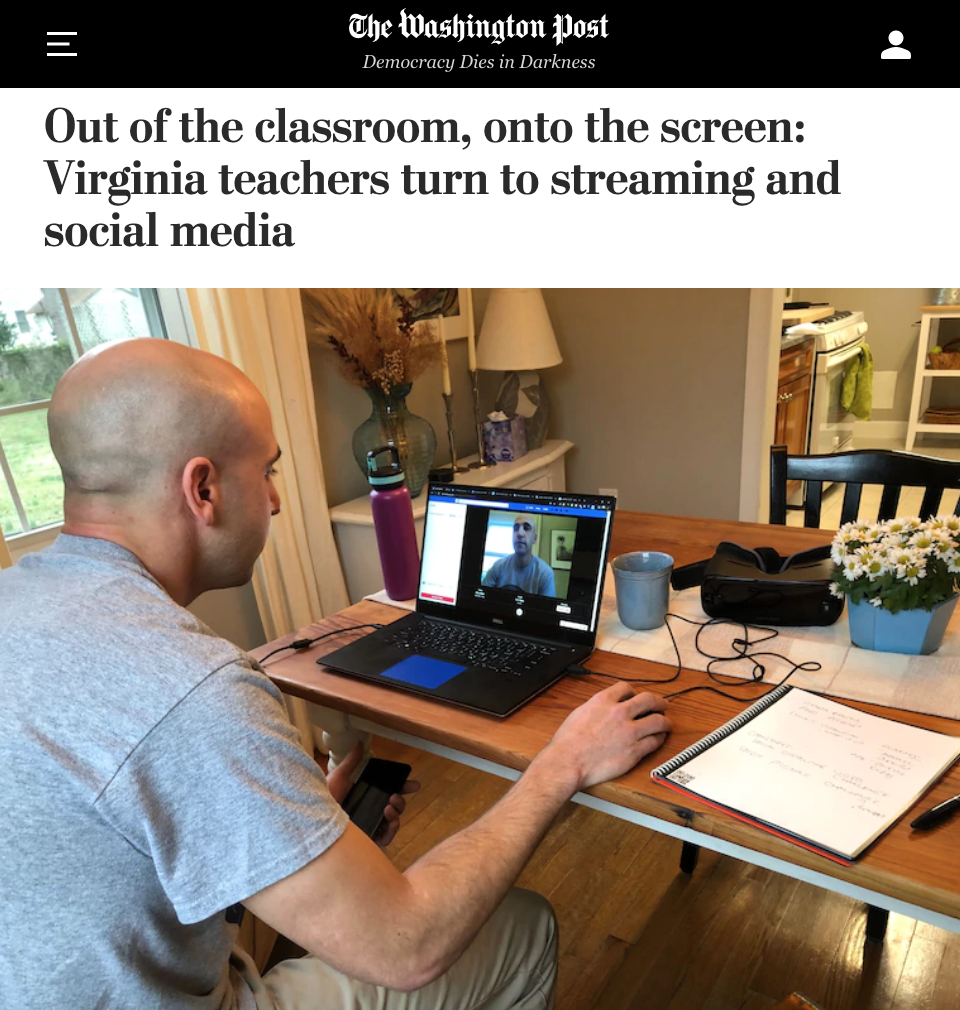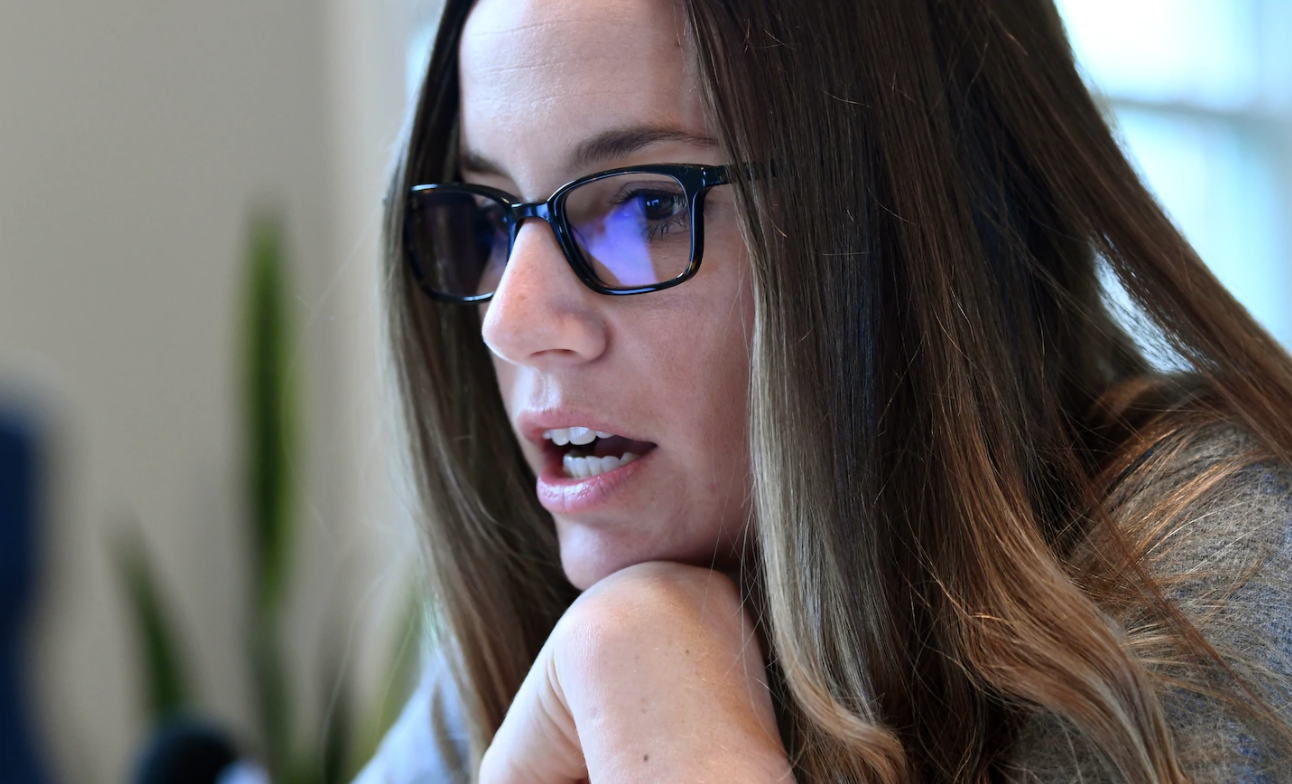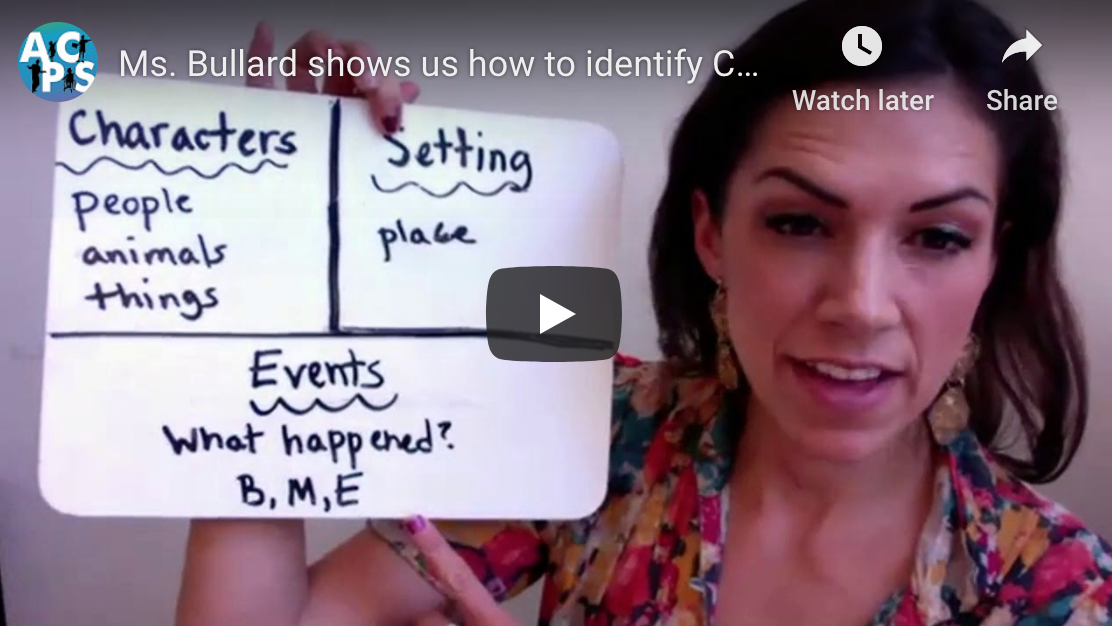Day 36 — Learning from Home Experience
On Friday, I presented our revised FY21 Budget and recommended reduction items to ensure that our FY21 Budget Priorities remain as our guide to financial spending as well as ensuring that our students and staff are at the forefront of our decision-making. It is important that we understand the budget reduction recommendations that were presented on Friday may increase in the near future if we do not see an uptick in our economy and revitalization of dollars appropriated to ACPS from city, local, state, and federal funding sources. These are definitely hard times that require empathy, leadership and care in order to ensure that whatever decisions are made on behalf of our school division, that they are made with vision, integrity and passion. On Tuesday, I’ll answer questions about the revised budget in my video Q&A. In the meantime, information about the budget and the presentation I gave to the Board during Friday’s Work Session can be found on the ACPS-at-Home website. Wednesday’s ACPS Insider will be a Budget Special Edition.
Today, I also wanted to share more details about our strategies for virtual teaching. Some of you may be familiar with the terms synchronous and asynchronous learning. However, do you know what characterizes the two differing approaches? The two methods were the subject of a recent Washington Post article featuring George Washington Middle School Algebra teacher Colleen McEnearney, who illustrated the synchronous learning that works so well for her and her students. But ACPS also offers asynchronous learning. Like all things, there are benefits and obstacles with both approaches. That’s why we afford our schools, staff and students the flexibility and autonomy to determine which works best for them and our students during this global pandemic.
It’s certainly true to say we are all students at the moment. Children are learning, teachers and principals are learning, and yes, your superintendent is also learning. There are so many new and innovative approaches for all of us recently. Strategies and techniques are evolving by the day while schools around the world have been catapulted into teaching, learning and working from home. Some elements I hope will stay around and enhance our teaching and learning when our school building doors open again in the future.
Below, we’ve shared a comprehensive list of learning resources, both synchronous and asynchronous for review. I hope you take some time to explore these resources to supplement and support the work you are already doing with our students.
Stay safe, stay healthy and stay informed!
Sincerely,
Dr. Gregory C. Hutchings, Jr.
Superintendent of Schools
Learn More About Our Learning Styles
During the pandemic, two key words have cropped up when we discuss continuous learning opportunities. These are “synchronous” versus “asynchronous” learning, but what do they mean?
Synchronous learning refers to a learning event in which a group of students are engaging in learning at the same time. Before learning technology allowed for synchronous learning environments, most online education took place through asynchronous learning methods.
Asynchronous learning is the idea that students learn the same material at different times and locations. Asynchronous learning is also called Location Independent Learning. It is the opposite to synchronous learning and has become more common as we have needed to adapt the way we offer learning opportunities during this pandemic when not all students are able to learn at the same time of day in the same way.
ACPS offers students multiple ways to learn at this time — both synchronous and asynchronous. It is critical that we offer both types of learning at this time so that we ensure all our students are able to continue to engage and learn while our school buildings are closed.
Synchronous Learning
Zoom classes with students fall into this category. Most classes at the secondary level are continuing to take place in some way through Zoom classes online. We also utilize biweekly check-in Zoom sessions and lessons for pre-K through elementary school students.
Check out these examples of how ACPS provides synchronous learning at this time:
- Washington Post story on ACPS synchronous learning at George Washington Middle School
- Washington Post story on ACPS’ synchronous learning at the International Academy at T.C. Williams High School
- Washington Post story on ACPS’ synchronous learning in AP classes at T.C. Williams High School
This format recreates a real-time classroom experience with students and teachers interacting live. This has the benefit of giving social and emotional support to students who miss seeing their teachers and class, and the teaching component at the same time.
For Colleen McEnearney, a George Washington Middle School Algebra teacher, the opportunity to be present with her students both during class, and also through individual one-on-one “check-in” sessions, is important. In terms of technology, it provides more challenges and additional preparation time.
In a recent interview with The Washington Post, McEnearney said, “I want it to work as smoothly as humanly possible although I know my Zoom is going to freeze at least once, and so are my students’ Zooms.” But the benefits of live time with her students, which allows her to keep that personal connection going, outweighs any hurdles for her.
The upside? This format is as close as we can get to providing a regular classroom environment. The downside? Not all students are able to make it to set class times so some may miss out due to family obligations or varied home situations.
Asynchronous Learning
Learning packets, teacher assignments, and prerecorded TV lessons all fall into this category.
At Douglas MacArthur Elementary School, teachers and administrators thought long and hard about the best approach to take with their students.
In the end, a team of staff including assistant principals Steven Geter and Becky Pittman, agreed on asynchronous learning as a starting point. For them, it was about equitable access and the knowledge that for their students, at least, not all were able to make set class times.
Also, they felt that although students in grades three to five did use Chromebooks at school, they did not necessarily have the competence to use technology independently. Asynchronous learning meant students could sit down and learn at a time that worked for their family’s schedule. It also meant content could be reviewed as many times as necessary to allow mastery.
They believe building a foundation of asynchronous learning resources allows a base where they can layer synchronous learning in the future.
Geter said, “It’s not that we are 100 percent one way or another, we want to blend the two. Right now we are at the foundational point of how do you build up the asynchronous portion so you can layer in the synchronous portion? Whether that be reading groups, mini lessons, etc.”
“But without the asynchronous portion we felt our students would be left spinning and left in an inequitable fashion because not everyone can make 10 a.m. on Tuesday.”
The upside? Learning content can be viewed and reviewed at the student and their family’s convenience. The downside? Lack of social and emotional connection.
Resources for Both Synchronous and Asynchronous Learning
Let’s take a look at some of the opportunities, both synchronous and asynchronous, that ACPS is providing.
Prerecorded lessons from ACPS teachers, for Pre-K through Grade 2
How to access:
- Grades 1 and 2: ACPS-TV local cable channel 71, from 8 to 11:30 a.m.
- Pre-K and Kindergarten: AlexTV local cable channel 70, from 8 to 11:30 a.m., and repeated the following week on ACPS-TV channel 71 between 2 and 4 p.m. each day.
- On the ACPS-TV website and AlexTV website
- On the ACPS-TV YouTube channel: Pre-K and Kindergarten and 1st and 2nd grades
- On the ACPS-at-Home website: Pre-K and Kindergarten and 1st and 2nd grades
Science Programming for grades 3-12 on ACPS-TV
Different content created by the Smithsonian and National Science Foundation is shown daily.
How to access:
- ACPS-TV local cable channel 71 from noon to 2 p.m. and 4 to 8 p.m. daily
- On the ACPS-TV website
Virginia Department of Education: VA TV Classroom
How to access:
- WETA or PBS from 1 to 3 p.m. daily
Spanish radio learning — “Virginia: Educación en Radio”
This features prerecorded lessons in multiple subject areas to support continuity of learning for Spanish-speaking students in grades K-12 while schools are closed.
How to access:
- Listen live at radiopoder1380.com from 10:30-11 a.m., Monday-Friday
- Listen live by phone at 206-629-0249 or 641-715-8936
Learning Packets
New learning packets are being mailed to students’ homes every couple of weeks.
Where to find them:
- In your mailbox (make sure your contact data is up to date or you won’t receive yours!)
- Posted to the ACPS-at-Home website
Recorded class Zoom sessions
Sometimes teachers are recording lessons so that students who may have missed the sessions can access them later (we all have trouble logging in sometimes!).
Where to find them:
- Contact your teacher or counselor
ACPS Story Hour
This provides professional recordings of read-alouds, copyright-cleared by the publishers, aimed at pre-K through 5th grade.
Where to find them:
- On the ACPS-at-Home website
Free Online Tutoring
A free 24/7 tutoring service is available to all ACPS students in grades 6-12. Every session is one-on-one and individualized to the subject matter.
How to access:
- On the ACPS-at-Home website
- By signing into Canvas and clicking the “Student Resources” tile on the student dashboard
Free NOVA summer classes
Northern Virginia Community College (NOVA) is offering graduating seniors the chance to take online college classes for free through a program called JumpStart. Students can take up to two college courses between June 1 and July 15, 2020. Most are taken in the student’s own time and do not require attendance in a virtual classroom.
How to access:
- Graduating seniors who have never applied to NOVA will need to complete an application 24 hours before registering for a JumpStart course. Once a student has a NOVA ID, they can then register for up to two JumpStart courses. See the JumpStart courses, admissions requirements, and access to the application instructions
- Contact one of the School Counselors at T.C. Williams High School, King Street Campus
- Contact the School Counselor at Chance for Change Academy
- More information on the ACPS-at-Home website
- See the Frequently Asked Questions
Watch Friday’s Board Meeting
During the closure of school buildings, our School Board is meeting virtually each Friday at noon.
If you missed it live, you can still watch it.
Watch the School Board Meeting.
Temperature Screening at ACPS Buildings
Anyone requiring access to an ACPS facility or school will be required to undergo a temperature check to help prevent the spread of the coronavirus. Testing stations will be established at seven locations, at or close to ACPS meal distribution sites and locations where major summer construction will take place. Screening will take no more than three minutes to complete and will involve the use of a clinical forehead thermometer.
All those with a temperature of 100.0 degrees Fahrenheit or lower (per Alexandria Health Department guidelines) will be given a dated wristband and be cleared to work as long as they are in possession of appropriate personal protection equipment consisting of masks and gloves.
Should an individual record an elevated temperature, that person will be informed that they are unable to report to work at an ACPS site and will be advised to call his or her supervisor.
Find out more about this measure in this Board Brief.
WANT TO HELP?
Please consider donating through ACT For Alexandria and the COVID-19 Response Fund if you are able.
Community members who would like to volunteer should reach out to www.volunteeralexandria.org or 703-836-2176 to register for any additional potential volunteer opportunities.
MENTAL HEALTH SUPPORT
Continuity of School Support and Academic Advisement
School Student Support Team staff, including school counselors, school nurses, school psychologists, and school social workers will be available during school hours throughout the closure. Monday — Friday between 8:30 a.m. and 3:30 p.m. staff will be connecting with students and their families. The Department of Student Services, Alternative Programs and Equity staff members are also available during this time and can be contacted by voicemail and at student_services@acps.k12.va.us.
Emergency Supports
If there is a crisis or emergency during the time of the closure, students and families can access the supports below:
- Crisis Text and Crisis Link:
- Text: CONNECT to 85511
- Call: 703-527-4077
- Alexandria Safe Place
- Alexandria City 24-Hour Emergency Mental Health Services
- Alexandria City Health Department and AHD Contacts
- Inova Alexandria Hospital (ER)
We know that this is a challenging time. ACPS will continue to share information through the ACPS website, social media, and email. Please don’t hesitate to reach out to your student’s school counselor or school social worker with any questions.
HEALTH REMINDERS
Don’t Feel Well?
Contact your primary health care physician.
Have questions, concerns or feedback? Contact us or contact your direct supervisor.
HR Questions? Contact hr@acps.k12.va.us.
Stay Healthy!
Wash your hands regularly. Regular soap is OK.




